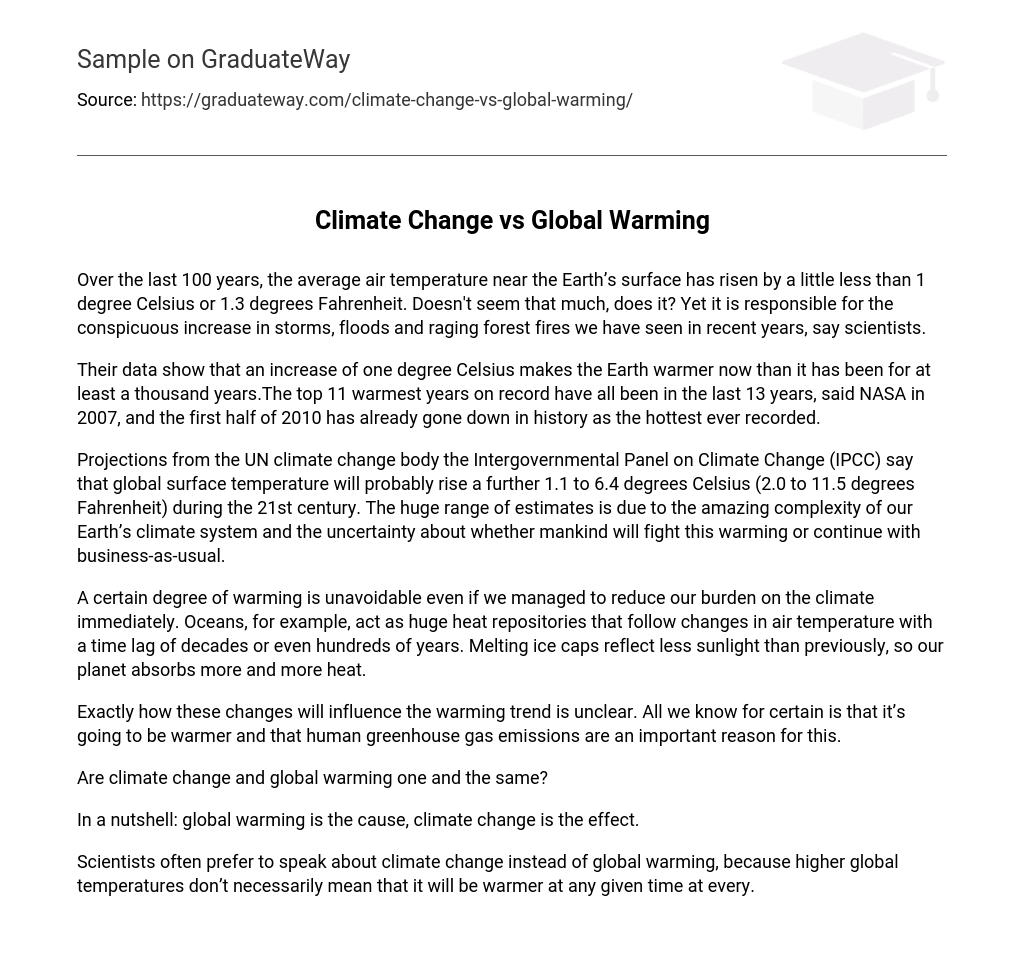Over the last 100 years, the average air temperature near the Earth’s surface has risen by a little less than 1 degree Celsius or 1.3 degrees Fahrenheit. Doesn’t seem that much, does it? Yet it is responsible for the conspicuous increase in storms, floods and raging forest fires we have seen in recent years, say scientists.
Their data show that an increase of one degree Celsius makes the Earth warmer now than it has been for at least a thousand years.The top 11 warmest years on record have all been in the last 13 years, said NASA in 2007, and the first half of 2010 has already gone down in history as the hottest ever recorded.
Projections from the UN climate change body the Intergovernmental Panel on Climate Change (IPCC) say that global surface temperature will probably rise a further 1.1 to 6.4 degrees Celsius (2.0 to 11.5 degrees Fahrenheit) during the 21st century. The huge range of estimates is due to the amazing complexity of our Earth’s climate system and the uncertainty about whether mankind will fight this warming or continue with business-as-usual.
A certain degree of warming is unavoidable even if we managed to reduce our burden on the climate immediately. Oceans, for example, act as huge heat repositories that follow changes in air temperature with a time lag of decades or even hundreds of years. Melting ice caps reflect less sunlight than previously, so our planet absorbs more and more heat.
Exactly how these changes will influence the warming trend is unclear. All we know for certain is that it’s going to be warmer and that human greenhouse gas emissions are an important reason for this.
Are climate change and global warming one and the same?
In a nutshell: global warming is the cause, climate change is the effect.
Scientists often prefer to speak about climate change instead of global warming, because higher global temperatures don’t necessarily mean that it will be warmer at any given time at every.





